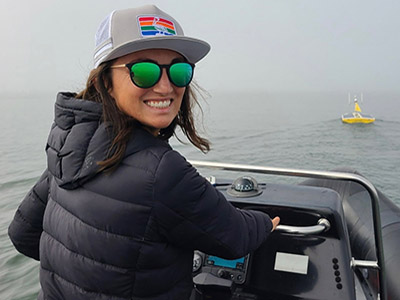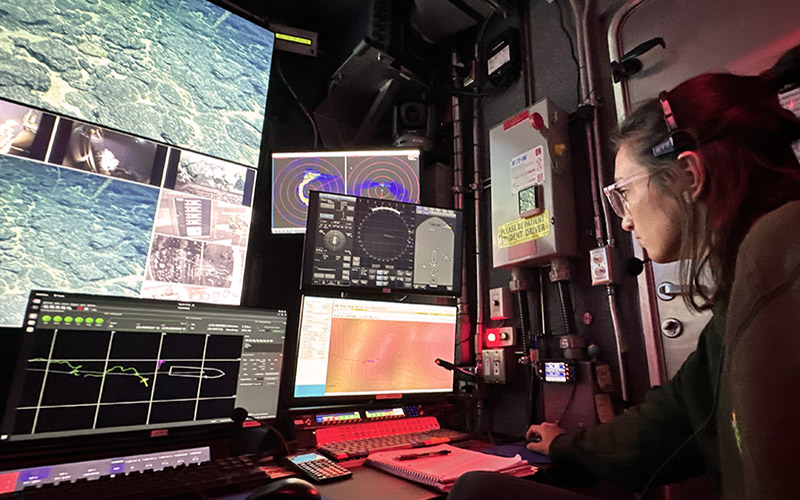This article was adapted from a Boundless Bulls profile featuring students who will earn degrees during fall commencement on Friday, Dec. 8, and Saturday, Dec. 9.

Catalina Rubiano’s favorite project while at CMS was working with SeaTrac to develop high-resolution maps of the seabed around Tampa Bay using an uncrewed vessel.
Catalina Rubiano was looking for a strong graduate program in marine science when she found community at the USF College of Marine Science (CMS). She is part of the first cohort to graduate with the new hydrography (seafloor mapping) concentration, designed to develop skills for careers outside of academia.
“We jumped in right away aboard the Research Vessel Hogarth with the goal of mapping the seafloor in the Big Bend area near the Florida Middle Grounds,” she said, referring to a unique area that boasts an ecosystem of sand and limestone pinnacles, ledges, springs, and other structures in the northeastern Gulf of Mexico. “Exploring the reefs and important habitats and just getting into this program were an indicator I was living my dream.”
Born and raised in New Orleans, Rubiano is a dual citizen of Colombia, where her father is from, and she tries to visit on a yearly basis. She also played professional soccer with the Colombian women’s national football team before returning to the states for a career on the water.
Her initial college experience included playing soccer and studying sociology at Louisiana State University. She decided to put down her cleats and set a new career goal – go back to school to get her bachelor’s degree in Earth and environmental science from the University of New Orleans. While there she heard about the innovative graduate program at CMS.
Just as she did on the soccer field, Rubiano went all into marine science. She earned the National Science Foundation Bridge to the Doctorate Endowed Graduate Fellowship, along with a fellowship through CMS.
“The Center for Ocean Mapping and Innovative Technologies (COMIT) at CMS opened all these incredible doors for me,” Rubiano said. “They gave me the skillset that allowed me to pursue things on my bucket list – sailing on ships that are literally just exploring the oceans. It’s been a dream come true.”
Her favorite project during her graduate program was collaborating with SeaTrac to develop high-resolution maps of the seafloor around Tampa Bay using an uncrewed vessel. This mapping helps create predictive storm surge models that are more accurate than ever before.
Rubiano will remain close to St. Petersburg and USF upon graduation. She interned over the summer at Saildrone, which shares workspace with the CMS-based Florida Flood Hub for Applied Research and Innovation, and recently accepted a full-time position there as a hydrographic surveyor.
